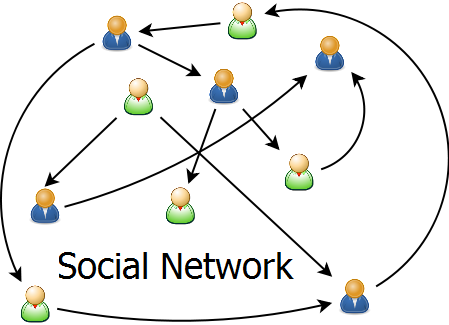
Yesterday, it was announced that Microsoft would pay an astonishing $26.2 billion for LinkedIn, the online job-search, resume-sharing business site.
LinkedIn has a reported 400 million users, but only a quarter of them use it reguarly. In rough math, Microsoft paid $262 per user to acquire an online social network.
Why?
I think it is fair to say that online social networks are rapidly becoming the primary platforms for communicating and sharing content of all kinds. In the media world, at least, they are rapidly replacing what used to be our 'old' networks of communciations - newspapers, TV networks and cable channels.
Those were the way in which we used to get information.
The difference was that those were passive networks. That is, they made it (the they being Discovery Channel or NBC or The New York Times) and we (the rest of us who did not make it), watched it or read it.
This one-way flow of information and content is not consonant with the fundamental architecture of the Internet, which flows content and information both ways. That is, we ALL contribute to Facebook, as well as use its information. We ALL contribute to the content of Twitter as well as use its information.
Old media networks are passive.
The new ones are aggressively inter-active.
In fact, the very foundation of Facebook or Twitter or Instagram or Airbnb or Uber or any one of 1000 other 'social media networks' is that they are 2-day. The NY TImes, NBC, CNN and so on are all one-way.
Microsoft was, until now, one-way. We make the software, you use it.
Can they re-invent themselves as two-way? I have no idea. Can they become an online affinity group, a commuity, as Facebook is a community, as Airbnb is a community, as TripAdvisor is a community? I have no idea.
What I think we can predict at this point, is that the future of any business, particularly any media business, is vested in this transition from being a passive (we make it you watch it) network to a far more vibrant participatory network.
I think also, from our perspective, a great deal of the content of these new networks is going to be in video.
As you may have noticed, last week, Facebook, with 1.6 billion members, announced that in 5 years it was going to be 100% video.
The transitional factor here is that for the very first time in history, the tools for creating in video, that most powerful of media, are in the hands of everyone - or at least the 2.6 billion people who have smart phones.
So... marry smart phones... video creation... and the new networks of participation together and what do you get?
You get the 'cable' companies, the 'broadcast networks', the 'newspaeprs' of the future.
This is going to happen.
The technology makes it inevitable.
The real question is, will you be a part of it?


